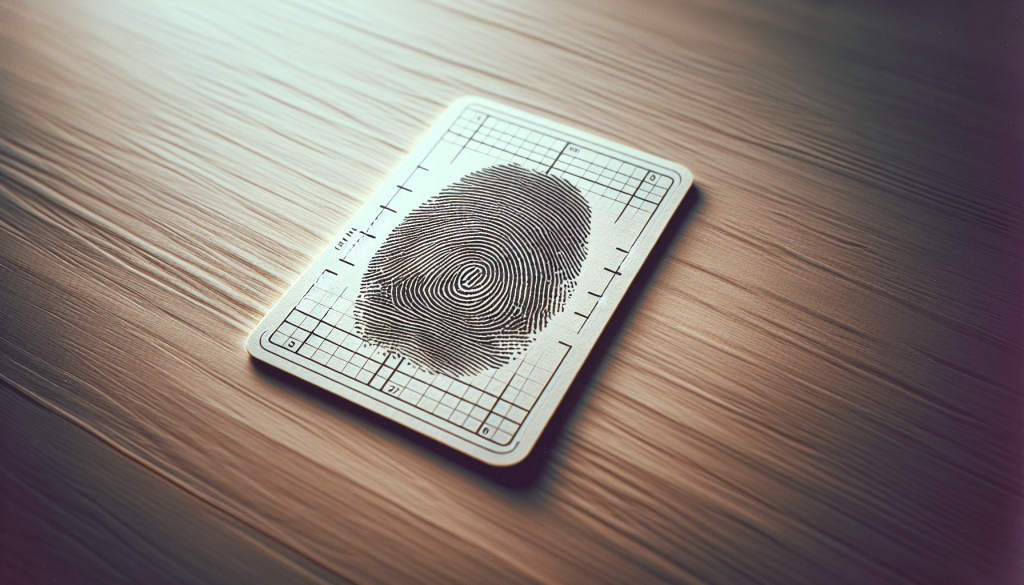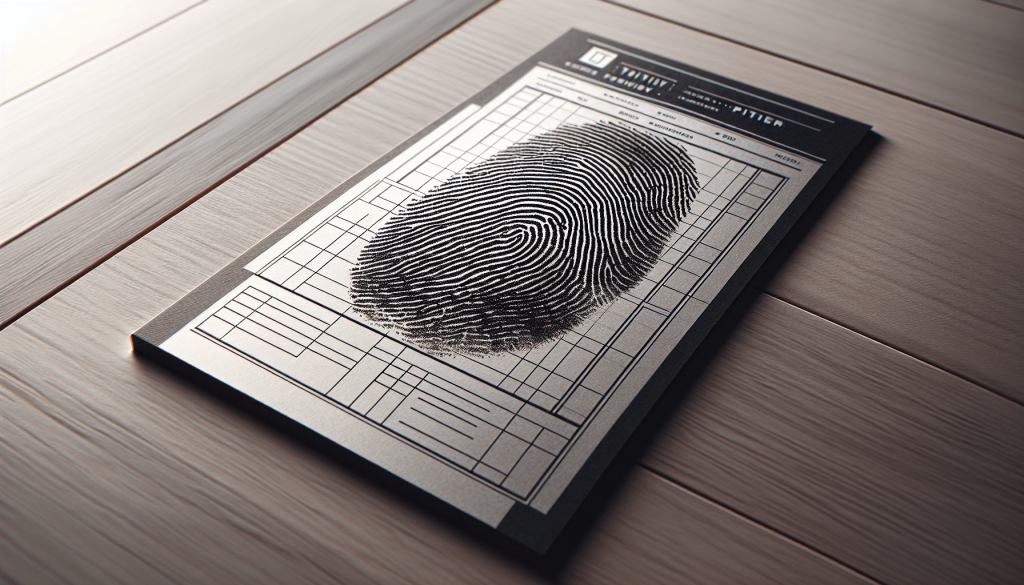Have you ever wondered what kind of paper is used for fingerprint cards? Whether you’re in law enforcement, forensics, or simply curious about the technicalities of fingerprinting, knowing the type of paper employed can be really enlightening.

Understanding Fingerprint Cards
First off, let’s understand what fingerprint cards are and their significance. Fingerprint cards, also known as tenprint cards, are typically used for personal identification in various sectors, including law enforcement, employment, and immigration. These cards capture an individual’s unique fingerprint patterns, serving as a reliable method for verifying identity.
Why Paper Quality Matters
You might ask, why can’t you just use any paper for fingerprinting? Well, the quality and type of paper can significantly impact the clarity and durability of the fingerprint impressions. Poor-quality paper may lead to smudged or incomplete prints, which could compromise identification processes crucial for law enforcement and other applications.
Key Attributes of Suitable Paper
To fully grasp why a specific type of paper is used for fingerprint cards, let’s break down the key attributes that make it effective:
- Porosity: Paper should have a balanced porosity to absorb the right amount of ink or fingerprint residue without soaking it up completely.
- Durability: The paper must withstand handling, especially in environments where cards are frequently examined.
- Surface Texture: A smooth surface helps in producing clear and distinct fingerprints.
Types of Paper Used for Fingerprint Cards
Multiple types of paper can be used for fingerprint cards, but certain types are more common due to their properties.
Card Stock Paper
Card stock is a popular choice for fingerprint cards due to its thickness and durability. This type of paper is heavier and more robust than regular paper, which makes it less likely to tear or wear out quickly.
- Thickness: Ranges generally between 80 lb (216 gsm) to 110 lb (298 gsm).
- Surface Texture: Smooth enough to produce clear fingerprint impressions.
- Durability: High, suitable for frequent handling.
Specialty Bond Paper
Another commonly used type of paper is specialty bond paper. This paper is specifically designed to hold ink and other substances effectively, making it ideal for capturing sharp fingerprint details.
- Thickness: Usually around 24 lb (90 gsm) to 32 lb (121 gsm).
- Surface Texture: Very smooth, aiding in the capture of fine fingerprint ridges.
- Porosity: Balanced to absorb optimal ink without smudging.
Security Paper
Security paper comes with features that prevent tampering and forgery, making it another suitable option for fingerprint cards, especially in high-stakes environments.
- Thickness: Generally around 28 lb (105 gsm) to 32 lb (121 gsm).
- Surface Texture: Smooth and includes security features like watermarks.
- Durability: High, reinforced with security features to prevent tampering.

Comparison Table of Common Paper Types
To make things easier, here’s a comparison table summarizing the attributes of these paper types:
| Paper Type | Thickness (gsm) | Surface Texture | Durability | Additional Features |
|---|---|---|---|---|
| Card Stock | 216 – 298 | Smooth | High | Basic durability |
| Specialty Bond | 90 – 121 | Very Smooth | Medium | Optimal ink absorption |
| Security Paper | 105 – 121 | Smooth | High | Anti-tampering features |
Specifications Set by Agencies
Different agencies and organizations have specific requirements for fingerprint cards, which often dictate the type and quality of paper used. For example:
FBI Standards
The FBI has stringent standards for the paper and performance specifications for fingerprint cards. According to the FBI, fingerprint cards should ideally be printed on 8” x 8” card stock or bond paper that meets their criteria. These requirements aim to ensure the cards are durable enough for long-term storage and clear enough for accurate fingerprint analysis.
International Standards
Many countries follow similar guidelines, but there can be variations. Agencies like INTERPOL and various national forensic institutions might have their own set of standards that are quite specific about the type of paper used.
Real-World Applications
You might wonder where these specialized papers are practically used. One prevalent use case is in law enforcement agencies worldwide, where these cards are essential for crime scene investigations, background checks, and identification of suspects. Another significant application is in immigration services where capturing an individual’s fingerprints is mandatory for processing applications.
Forensics
In forensics, the clarity and durability of the fingerprint impressions are crucial. Any distortion or smudging could potentially result in inconclusive findings, affecting the accuracy and reliability of forensic investigations.
Employment Background Checks
Fingerprint cards are also vital for employment background checks, especially in industries requiring high-security clearances. Here, the durability and longevity of the fingerprint impressions are essential for long-term record-keeping.
How to Choose the Right Paper
With multiple types of paper available, how do you choose the right one for your needs?
Assessing Quality
- Check Manufacturer’s Specifications: Always refer to the manufacturer’s guidelines to ensure the chosen paper meets the intended use case.
- Test Prints: Conduct test prints to assess the clarity and durability of fingerprint impressions.
Cost vs. Quality
While higher-quality paper typically comes at a higher cost, balancing between cost and quality is essential. Consider your specific needs and the implications of using lower-quality paper. If your use case involves frequent and detailed fingerprint analysis, investing in higher-quality paper can save time and resources in the long run.
Common Mistakes to Avoid
Using Regular Paper
One of the most common mistakes is using regular printer paper for fingerprint cards. Ordinary paper is generally too thin and porous, resulting in smudged or unclear prints.
Ignoring Environmental Factors
Humidity and temperature can affect how ink sets on paper. Always store fingerprint cards in a controlled environment to maintain their quality and effectiveness.
Overlooking Compliance
Not adhering to the guidelines set by relevant authorities can render fingerprint cards invalid. Always ensure you’re using paper that meets the required standards.
Future Trends in Fingerprint Card Technology
With technological advancements, there’s potential for new developments in the types of paper used for fingerprint cards.
Digital Fingerprinting
While traditional paper fingerprint cards are still prevalent, digital fingerprinting is an emerging trend. This technology reduces the dependency on physical paper and enhances the accuracy and speed of fingerprint capture.
Biometric Advances
Biometric technology is rapidly advancing, offering more precise and efficient ways of capturing and analyzing fingerprints. This could lead to more stringent requirements for the type of paper used in cases where traditional fingerprint cards are necessary.
Conclusion
So, what kind of paper is used for fingerprint cards? The most suitable types are card stock, specialty bond paper, and security paper, each offering specific benefits that ensure clear, durable, and tamper-resistant fingerprint impressions. Whether you’re involved in law enforcement, forensic science, or just have a keen interest in fingerprinting methodologies, understanding the importance of paper quality can make a significant difference.
Ensuring you choose the right type of paper, adhering to relevant standards, and avoiding common mistakes can lead to more effective and reliable fingerprinting practices. As technology progresses, staying updated with the latest trends and innovations in fingerprint card technology will be essential for continuing to achieve the highest standards in identification processes.

